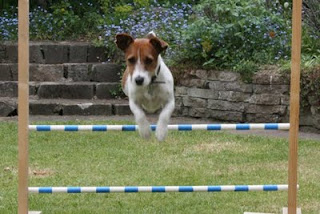A dog's sense of smell is so keen that his world is full of scents, others exciting, some soothing, each having a definite message to determine his behavior. When you take your dog out for a walk, watch him closely—to him, half the fun is sniffing areas where other animals, or other dogs, have passed.
Scenting ability differs in certain types of dogs. It appears to be most penetrating in those having long noses, long ears, and pendulous lips, like the hounds and sporting breeds. Shape and color of the nostrils also may be crucial. The keenest noses are usually those whose nostrils are huge, black, and wide open. Exceptions to the color rule are the brown-nosed hunting dogs. An impermanent fading of the nostrils from black to brown is generally caused by some "off" condition; it happens oftentimes to females in season.


The dog in the house, no matter how long his nose is, can distinguish smells to an amazing level. He feels safe and at home on his blankets since they carry his scent. He loves your old coat or sweater to lie on because it bears your scent. If he rides in the car, his head out the window, he recognizes you've turned homewards because he realizes neighborhood scents. It is nearly unbelievable, but true. A dog can smell formic acid, for example, in a solution carrying only one part of the acid in ten million parts of water; and he can know your scent on an object you have held in your hand for a bare two seconds.
Because the nose is also the organ of breathing, it does its greatest work when the nostrils are clean, cool, and mucus-free. The cold nose, being a sign of a healthy dog has been overrated. A huddle beside a radiator or a snooze under blankets could warm the nose of an animal in the best of health. Dryness, nevertheless, generally indicates fever instead of warmth. When in doubt, always take the dog's temperature.




Mucus or watery discharge is more serious. It indicates bronchial ailment or distemper, but could also result from a simple cold. Clean off the nose using a soft cloth, take away the mucus within the nostrils using a swab, and then lightly grease them with Vaseline of olive oil to maintain them soft. This is significant in the illness since mucus makes breathing hard and forbids the smelling and tasting of food.
© 2011
Tip Writer
